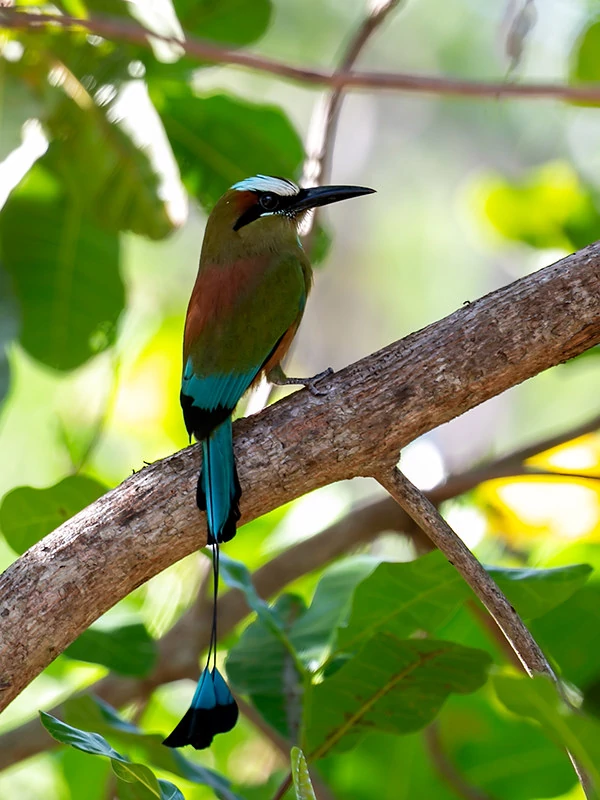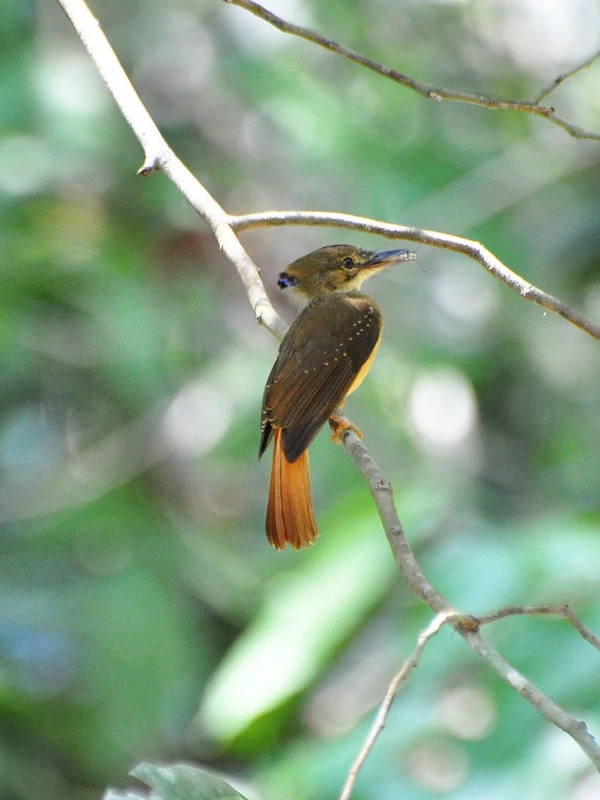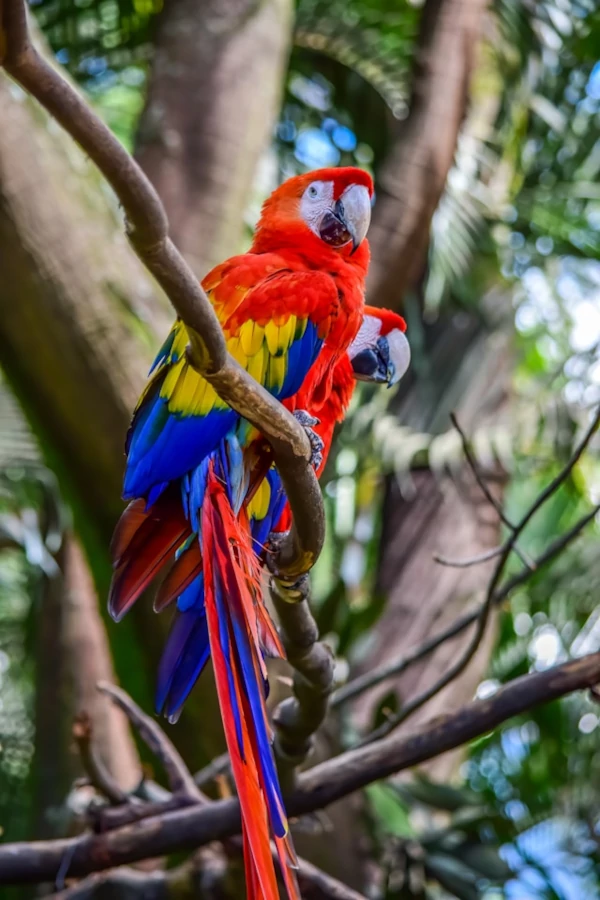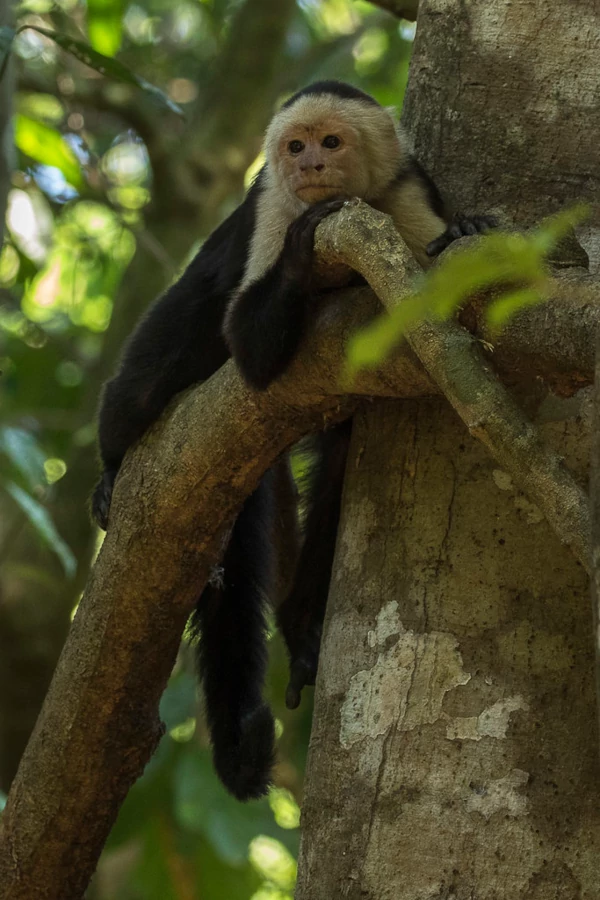Best known for its scarlet macaws, the park is a top destination for birdwatchers and wildlife enthusiasts. Visitors can hike through dense jungle trails, spot crocodiles along the Tarcoles River, and experience a rich variety of mammals, reptiles, and exotic plants. Its accessibility and diverse ecosystems make Carara National Park a must-visit for nature lovers.
Carara National Park: Where the Rainforest Meets the Pacific
Discover Carara National Park
Carara National Park is a biological wonderland where the lush rainforests of Costa Rica’s Pacific coast meet the dry tropical forests of the north. Known for its incredible biodiversity and unique ecosystems, Carara is a must-visit destination for nature lovers and wildlife enthusiasts. Whether you’re planning a trip to Costa Rica or simply dreaming of your next adventure, Carara National Park will leave you in awe.
About the Park
Carara National Park is one of Costa Rica’s most unique protected areas, serving as a transition zone between the dry forests of the north and the humid rainforests of the south. This unique location makes it a hotspot for biodiversity, home to scarlet macaws, howler monkeys, and countless other species.
The park was established in 1978 to protect its rich ecosystems and provide a sanctuary for wildlife. Today, it’s a popular destination for birdwatchers, hikers, and anyone who loves being immersed in nature.
Location and How to Get There
Carara National Park is conveniently located just 50 miles (80 km) from San José, making it an easy day trip from the capital. The park is situated near the Tárcoles River, famous for its crocodile population, and is close to popular destinations like Jaco and Manuel Antonio.
- By Car: The drive from San José takes about 1.5 hours via the Costanera Sur Highway.
- By Bus: Public buses run regularly from San José to the nearby town of Tárcoles, where you can take a short taxi ride to the park entrance.
History and Conservation
Carara National Park has a rich history that reflects Costa Rica’s commitment to conservation and sustainable tourism. The park’s name, “Carara,” comes from the indigenous Huetar language and means “river of lizards,” a nod to the area’s abundant reptile population.
Over the years, Carara has become a key site for scientific research and environmental education. The park’s transitional forest provides a unique opportunity to study how different ecosystems interact and support diverse wildlife.
Wildlife and Biodiversity in Carara National Park
Carara National Park is a biodiversity hotspot, offering visitors a chance to experience some of Costa Rica’s most incredible wildlife and natural landscapes. From vivid scarlet macaws to majestic crocodiles, this park is a paradise for nature enthusiasts. Whether you’re a birdwatcher, a wildlife photographer, or simply someone who loves being in nature, Carara will leave you in awe.
Iconic Animals to Spot
One of the highlights of Carara National Park is its diverse wildlife. As you explore the park’s trails, keep your eyes peeled for:
- Scarlet macaws: These vibrant birds are the stars of Carara, with their striking red, blue, and yellow feathers. They’re often seen flying in pairs or feeding on almond trees.
- Howler monkeys: Listen for their deep, guttural calls echoing through the forest. These primates are often spotted lounging in the treetops.
- White-faced capuchins: Playful and curious, these monkeys are a joy to watch as they swing through the trees.
- American crocodiles: Just outside the park, the Tárcoles River is home to one of the largest populations of crocodiles in Central America.
Birdwatching in Carara
Carara is a birdwatcher’s paradise, with over 200 species of birds recorded within its boundaries. Some of the most sought-after species include:
- Scarlet macaws: These colorful birds are a must-see for any visitor.
- Trogons and motmots: Known for their bright plumage and unique calls, these birds are a favorite among birdwatchers.
- Waterbirds: Along the Tárcoles River, you can spot herons, egrets, and kingfishers.
Bring your binoculars and a good camera—you’ll want to capture every moment.
The Tárcoles River and Crocodile Bridge
The Tárcoles River is one of Carara’s most iconic features, famous for its large population of American crocodiles. A visit to the Crocodile Bridge is a must, where you can safely observe these impressive reptiles from above. For a closer look, consider taking a boat tour along the river. These tours offer a chance to see crocodiles, iguanas, and a variety of waterbirds in their natural habitat.
The Transitional Forest
Carara’s transitional forest is a unique ecosystem where the dry forests of the north meet the humid rainforests of the south. This blend of habitats supports an incredible variety of plant and animal life.
- Flora: Look out for giant ceiba trees, strangler figs, and colorful heliconias.
- Fauna: The forest is home to agoutis, coatimundis, and a variety of reptiles and insects.
Activities in Carara National Park
Carara National Park is a playground for nature lovers, offering a mix of adventure, wildlife encounters, and relaxation,Whether you’re hiking through lush rainforests, spotting scarlet macaws, or exploring the Tárcoles River, there’s something for everyone. Here are the top activities to add to your Carara itinerary:
Hiking the Trails
Carara’s well-maintained trails are perfect for exploring the park’s diverse ecosystems. The two main trails are:
- Laguna Meándrica Trail: This 4.5-mile (7 km) trail takes you through primary rainforest and along the Tárcoles River, offering excellent opportunities to spot wildlife like scarlet macaws, howler monkeys, and iguanas.
- Universal Access Trail: A shorter, wheelchair-accessible trail that’s ideal for families or those with limited mobility. This trail features interpretive signs that provide insights into the park’s flora and fauna.
Exploring the Tárcoles River
The Tárcoles River is one of Carara’s most iconic features, famous for its large population of American crocodiles. A visit to the Crocodile Bridge is a must, where you can safely observe these impressive reptiles from above.
- Boat Tours: For a closer look, consider taking a boat tour along the river. These tours offer a chance to see crocodiles, iguanas, and a variety of waterbirds in their natural habitat.
- Eco-Friendly Practices: Remember to choose tour operators that follow eco-friendly practices to protect the river’s ecosystem.
Relaxing and Enjoying the Scenery
Sometimes, the best thing to do in Carara is simply slow down and enjoy the beauty of nature. Find a quiet spot along the trails or near the river to soak in the sights and sounds of the rainforest.
- Picnic Areas: Pack a lunch and enjoy a picnic in one of the park’s designated areas.
- Sunset Views: If you’re near the Tárcoles River, stick around for a stunning Pacific sunset.
Visitor tips
Planning a visit to Carara National Park? Here’s everything you need to know to make the most of your trip. From the best time to visit to what to pack, these tips will help you prepare for an unforgettable adventure in one of Costa Rica’s most biodiverse parks.
Best Time to Visit
Carara National Park is a year-round destination, but the dry season (December to April) is the most popular time to visit. During these months, you’ll enjoy sunny weather and easier trail conditions, making it ideal for hiking and wildlife spotting.
- Rainy Season (May to November): While you might encounter afternoon showers, the rainforest is lush and green, and the park is less crowded.
- Wildlife Viewing: Early mornings are the best time to spot wildlife, no matter the season.
Entrance Fees and Opening Hours
Carara National Park is affordable and easy to access, making it a great option for travelers on a budget.
- Entrance Fee: $10 for adults and $5 for children.
- Opening Hours: The park is open from 8:00 AM to 4:00 PM daily, but it’s best to arrive early to avoid the midday heat and crowds.
- Guided Tours: Hiring a local guide is a great way to learn more about the park’s wildlife and history. Guides are available at the park entrance.
What to Pack
Packing the right gear can make your visit to Carara much more enjoyable. Here’s a quick checklist:
- Comfortable hiking shoes: The trails can be muddy, especially during the rainy season.
- Lightweight clothing: Opt for breathable fabrics to stay cool in the humid climate.
- Reef-safe sunscreen: Protect your skin and the environment.
- Insect repellent: Keep those pesky bugs at bay.
- Binoculars and a camera: Essential for spotting and photographing wildlife.
- Water and snacks: Stay hydrated and energized during your visit.
Safety Tips
Carara National Park is a safe destination, but it’s always good to be prepared. Here are a few tips to keep in mind:
- Stay on marked trails: This protects the environment and keeps you safe from wildlife.
- Respect the wildlife: Observe animals from a distance and never feed them.
- Swim with caution: While the Tárcoles River is fascinating, avoid swimming due to the presence of crocodiles.
- Leave no trace: Pack out all your trash and avoid disturbing the natural environment.
Nearby Attractions and Accommodations
If you have extra time, consider exploring the surrounding area. The town of Tárcoles is just a short drive from the park and offers charming accommodations, local restaurants, and cultural experiences.
- Where to Stay: From eco-lodges to beachfront hotels, there are plenty of options to suit every budget.
- Other Activities: Visit nearby Jaco Beach or take a day trip to Manuel Antonio National Park for more adventure.







